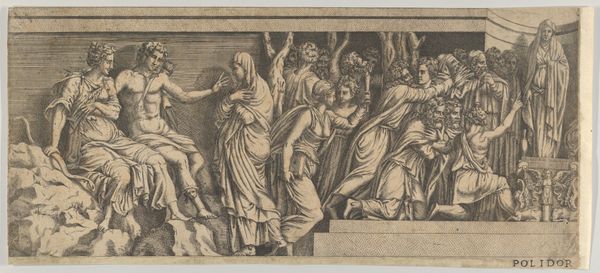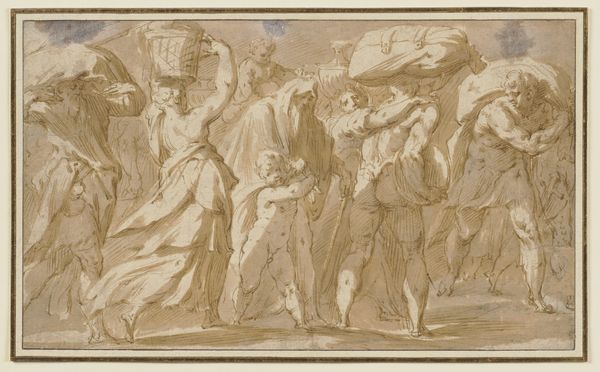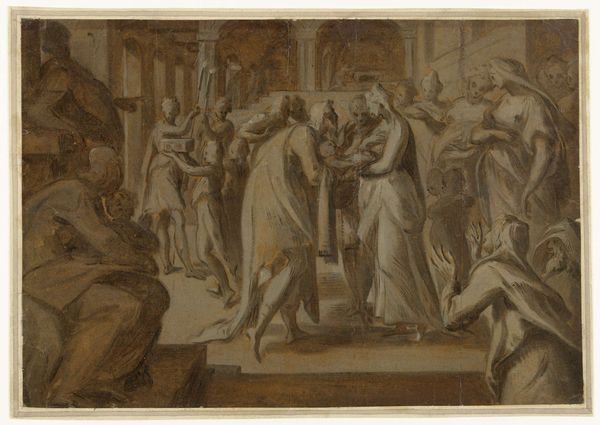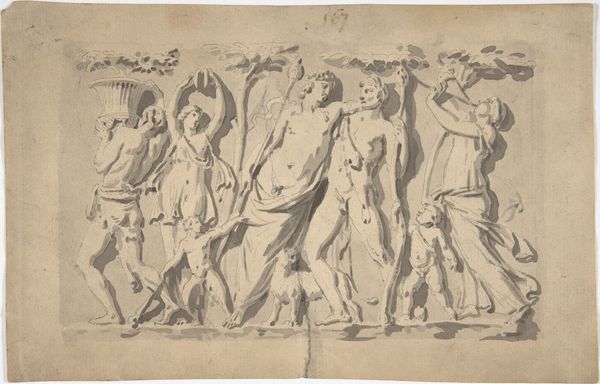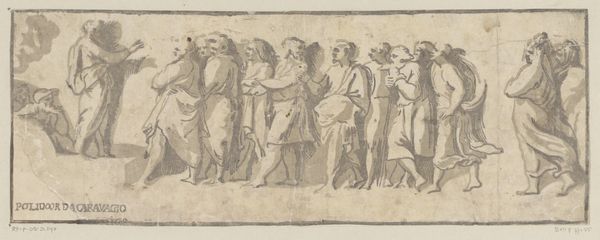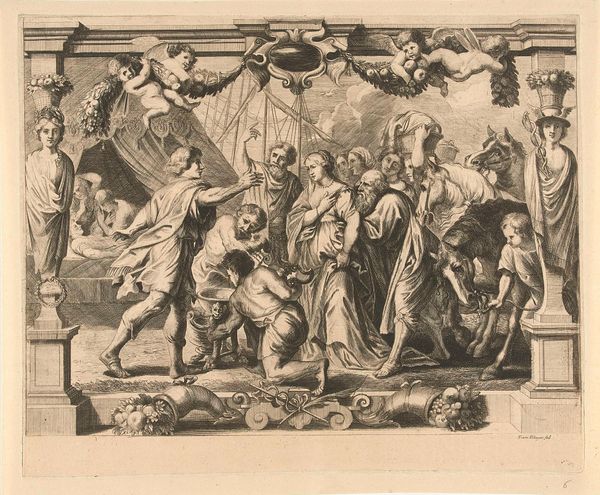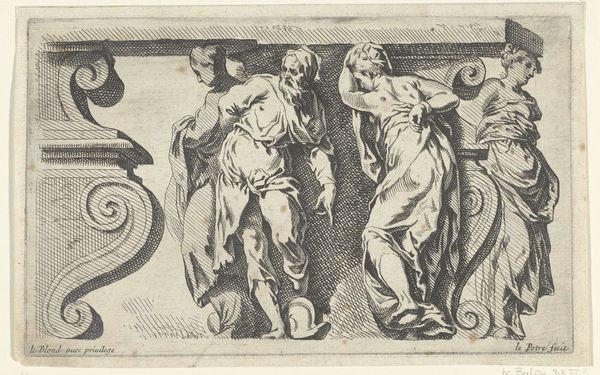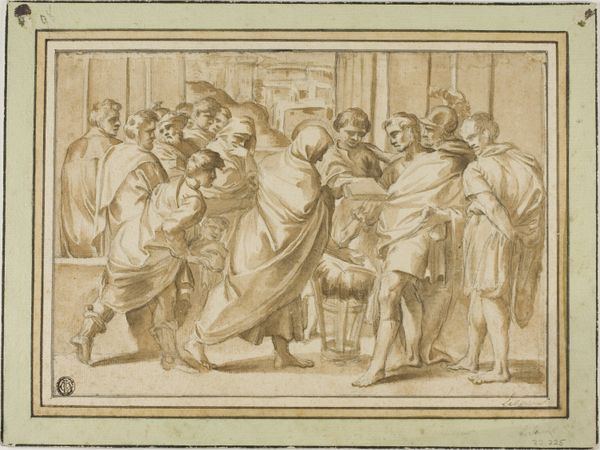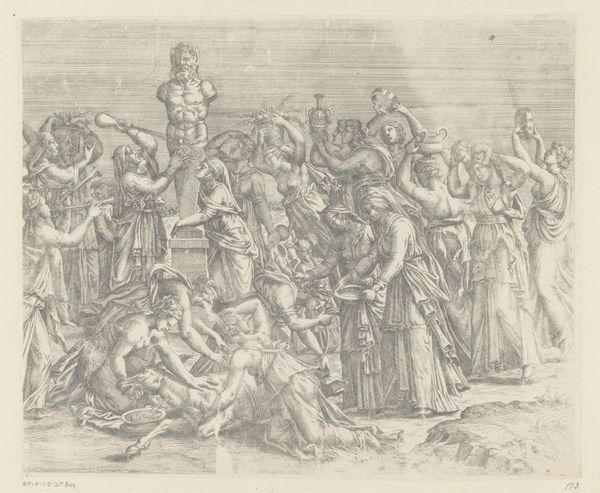
Scenes from Ancient History, after Polidoro da Caravaggio 1560 - 1608
0:00
0:00
drawing, print, etching
#
drawing
#
narrative-art
# print
#
etching
#
etching
#
figuration
#
11_renaissance
#
soldier
#
men
#
history-painting
#
academic-art
#
italian-renaissance
Dimensions: 4 11/16 x 13 1/8in. (11.9 x 33.3cm)
Copyright: Public Domain
Editor: This is Andrea Boscoli's "Scenes from Ancient History, after Polidoro da Caravaggio," dating sometime between 1560 and 1608. It's an etching, rendered in these warm sepia tones. The frieze-like composition gives it a timeless quality, almost like something unearthed. What strikes me most is the emotional range on display, even in this relatively small scale. How do you interpret this work? Curator: The beautiful thing about history, especially ancient history rendered anew, is how it acts as a mirror, reflecting our present anxieties and triumphs back at us. Boscoli, working long after the height of the Renaissance, is already looking back at it with a bit of melancholic yearning, don't you think? This image, a copy of a fresco cycle by Polidoro da Caravaggio, layers Renaissance ideals atop Roman virtues, like palimpsest skins over our souls. Editor: That idea of layers is intriguing. So, you’re saying Boscoli isn't just recreating an ancient scene but also commenting on the artistic lineage leading up to his own time? Curator: Precisely. He's in dialogue with the past, both the classical world depicted, and the Renaissance that rediscovered it. The etching itself allows for a wider dissemination of these heroic narratives, a democratizing impulse in a way, even if those narratives themselves are rooted in power and conquest. Do you see it that way? The print becomes almost like a meme, spreading the gospel of ancient virtue, albeit filtered through a Renaissance lens. Editor: I do now! I hadn't thought of it in those terms before. Thanks to Boscoli’s print, I can engage with interpretations of classical art more personally. Curator: Art making does exactly that; it is an iterative journey and not just the finish line. Art is nothing but a timeless conversation, full of opinions, where we all get to say a word or two.
Comments
No comments
Be the first to comment and join the conversation on the ultimate creative platform.
